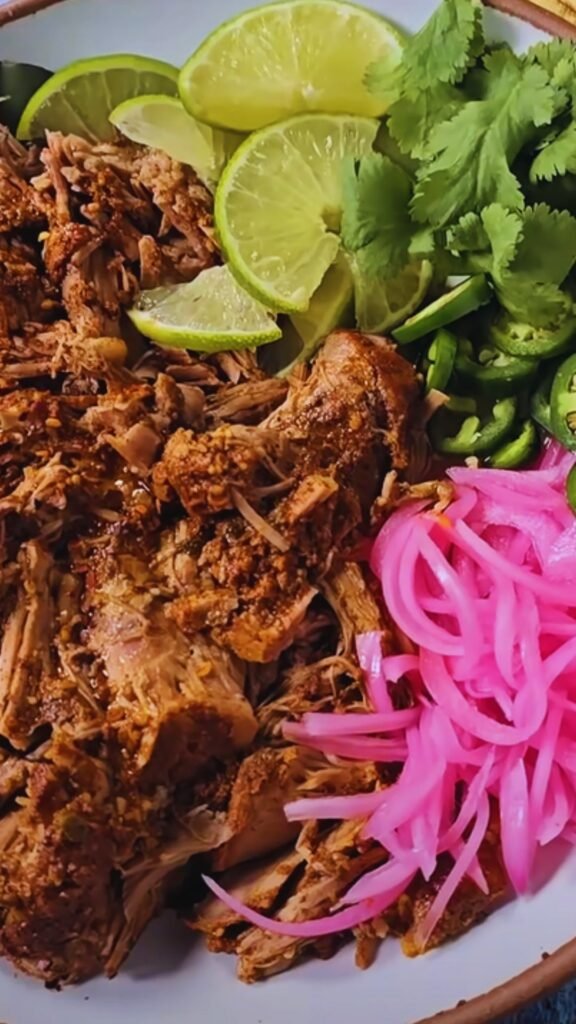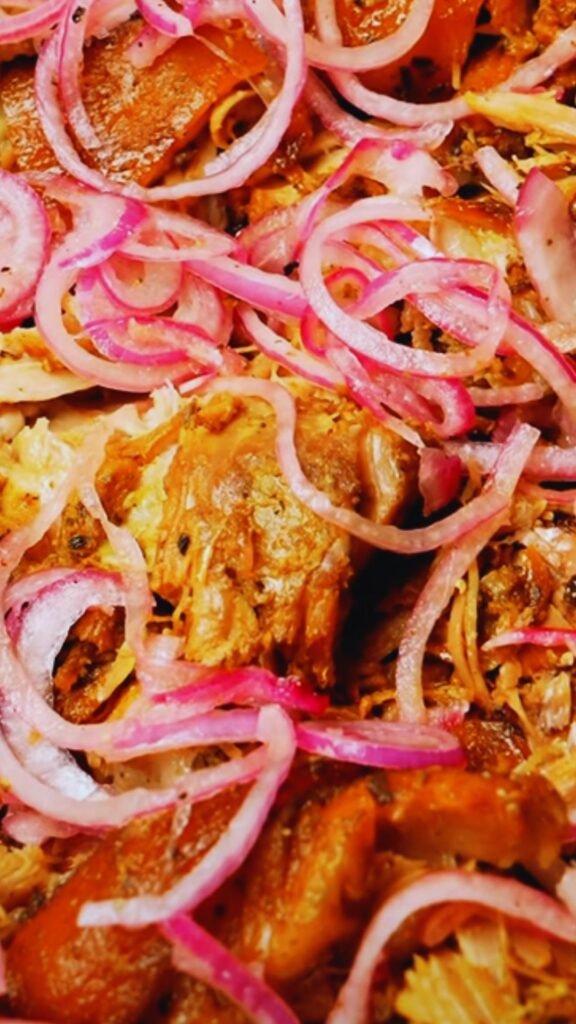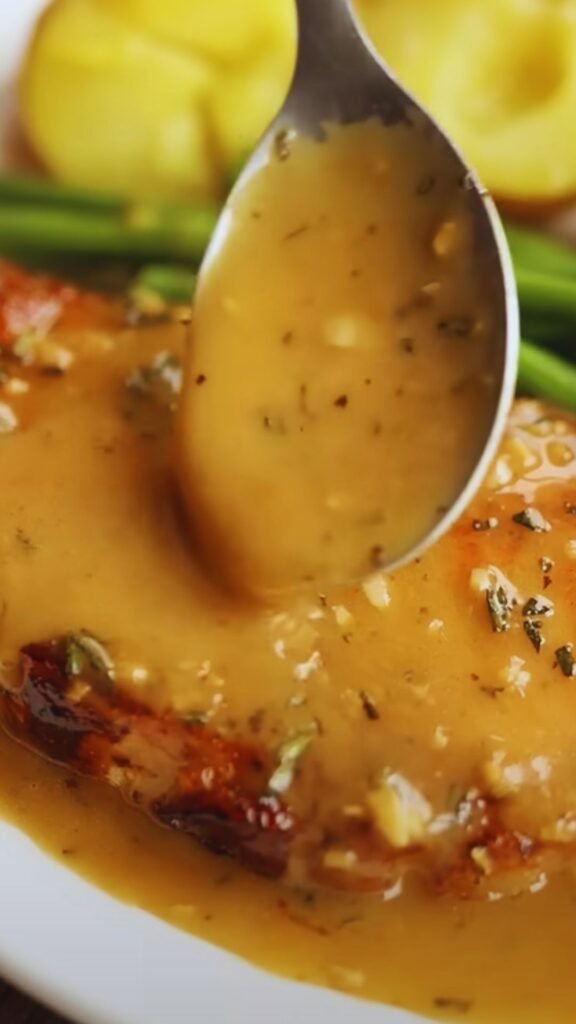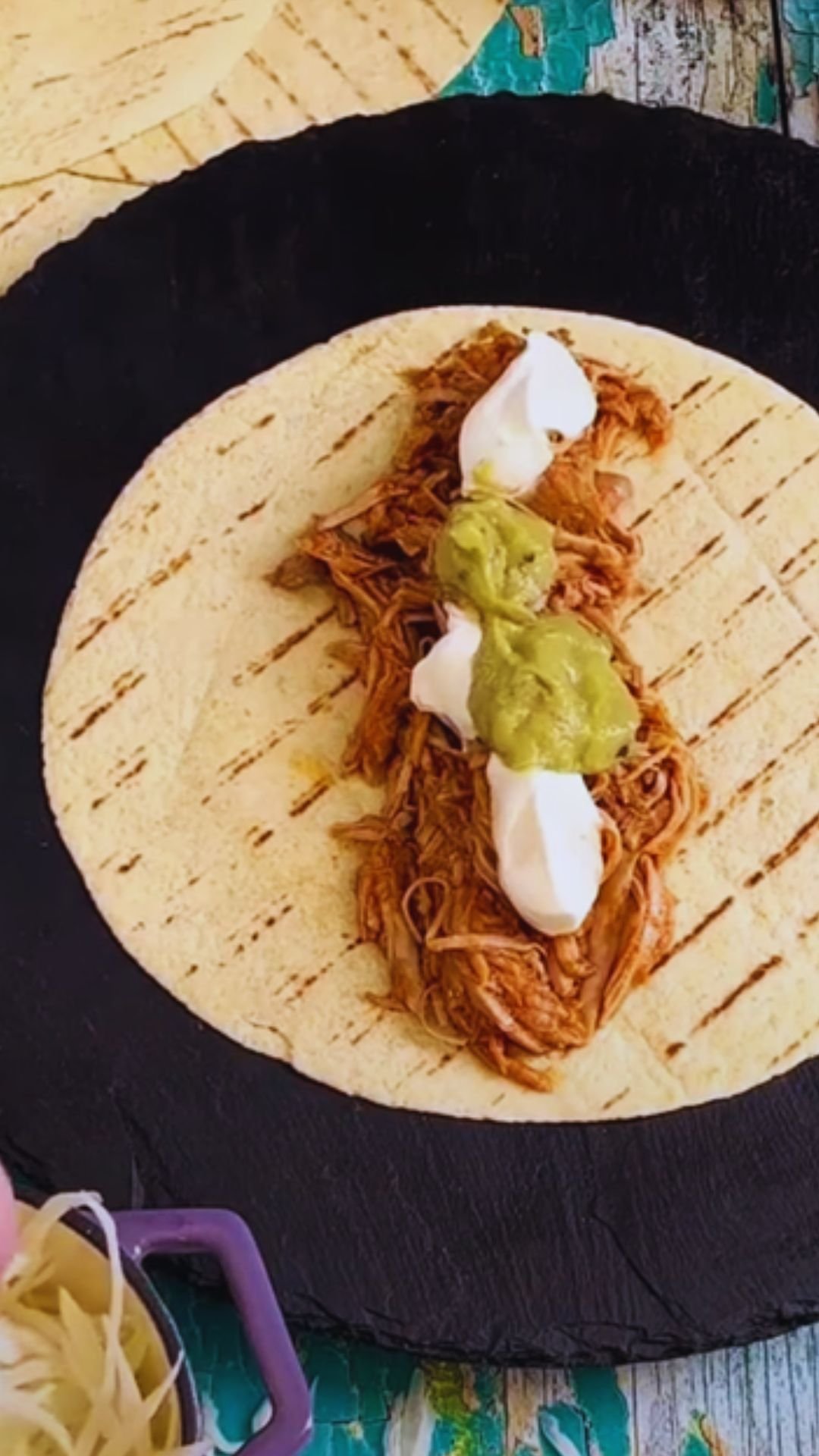Have you ever sunk your teeth into perfectly tender, fall-off-the-bone pork shoulder with a crispy, flavorful crust and wondered if you could recreate such magic at home? I certainly have, and after numerous attempts (including a few memorable failures), I’ve finally mastered what I consider the ultimate Mexican roast pork shoulder recipe.
This dish, known as “pernil” in some regions and similar to “cochinita pibil” in others, brings together the earthy richness of traditional Mexican spices with the homey comfort of slow-roasted meat. What makes this recipe special is the balance of flavors – smoky, citrusy, spicy, and savory notes that transform an inexpensive cut of meat into something truly magnificent.
I’ve spent years refining this recipe, learning from both my mistakes and triumphs, and I’m thrilled to share it with you today. Whether you’re planning a festive gathering or simply want to elevate your weekend family dinner, this Mexican roast pork shoulder is guaranteed to impress.
What Makes This Mexican Pork Shoulder Special
Before diving into the recipe, let me share why this particular version stands out:
- The marinade combines traditional Mexican flavor profiles with a few unexpected ingredients that elevate the entire dish
- The cooking method ensures a perfect balance of juicy meat and crispy exterior (often called “bark” by barbecue enthusiasts)
- It’s incredibly versatile – you can serve it in multiple ways from tacos to rice bowls
- Despite its impressive results, it’s actually quite forgiving and difficult to mess up completely
Key Ingredients Breakdown
Let’s explore the essential components that make this dish shine:
Pork Shoulder : Also known as pork butt or Boston butt, this well-marbled cut becomes incredibly tender when cooked low and slow. The fat content bastes the meat as it cooks, resulting in juicy, flavorful pork.
Dried Chilies : These provide depth, complexity, and varying degrees of heat. I use a combination rather than a single type to create a more nuanced flavor profile.
Achiote Paste : This brick-red seasoning derived from annatto seeds adds a distinctive earthy flavor and gorgeous color to the dish.
Citrus Juice : The acidity tenderizes the meat and brightens the flavor profile. I use a combination of lime, orange, and grapefruit for complexity.
Mexican Oregano : Different from Mediterranean oregano, this variety has subtle citrus and licorice notes that complement Mexican dishes perfectly.
Equipment You’ll Need
Before starting, gather these kitchen tools:
- Large roasting pan with rack
- Meat thermometer (preferably digital)
- Blender or food processor (for the marinade)
- Large ziplock bags or container for marinating
- Kitchen twine (if your pork shoulder isn’t already tied)
- Aluminum foil
- Sharp knife
Ingredient List
For the Pork:
- 1 bone-in pork shoulder (approximately 6-8 pounds)
- 2 tablespoons kosher salt (plus more for final seasoning)
- 2 tablespoons freshly ground black pepper
For the Marinade:
- 4 dried guajillo chilies
- 2 dried ancho chilies
- 1 dried chipotle chili (adjust according to your heat preference)
- 3 tablespoons achiote paste
- 8 garlic cloves, peeled
- 1 large white onion, roughly chopped
- 1/4 cup fresh orange juice
- 1/4 cup fresh lime juice
- 2 tablespoons fresh grapefruit juice (optional but recommended)
- 3 tablespoons white vinegar
- 1 tablespoon Mexican oregano
- 1 tablespoon ground cumin
- 1 tablespoon ground coriander
- 2 teaspoons ground cinnamon
- 1/4 cup olive oil
- 2 tablespoons brown sugar
For Serving:
- Warm corn tortillas
- Fresh lime wedges
- Chopped cilantro
- Diced white onion
- Sliced radishes
- Fresh salsa verde
- Pickled red onions
The Full Recipe: Step-by-Step
Preparation Phase (Day Before Cooking)
- Prepare the chilies: Remove stems and seeds from the dried chilies. Place them in a bowl and cover with boiling water. Let them soak for about 30 minutes until soft and pliable.
- Make the marinade: Drain the softened chilies (reserve a bit of the soaking liquid) and add them to your blender or food processor. Add all remaining marinade ingredients and blend until smooth. If needed, add a tablespoon or two of the chili soaking liquid to help it blend properly. The consistency should be similar to a thick paste.
- Prepare the pork shoulder: Pat the pork shoulder dry with paper towels. Score the fat cap in a diamond pattern, cutting about 1/4 inch deep to help the marinade penetrate and the fat render properly.
- Season and marinate: Rub the pork shoulder all over with salt and pepper, getting into all the crevices. Place the pork in a large container or ziplock bag and cover completely with the marinade. Massage the marinade into the meat, paying special attention to the scored fat and any natural seams in the meat.
- Refrigerate: Cover the container or seal the bag and refrigerate for at least 12 hours, preferably 24 hours. If possible, turn the pork occasionally so the marinade contacts all parts evenly.

Roasting Day
- Preheat the oven: Remove the pork from the refrigerator 1-2 hours before cooking to allow it to come closer to room temperature. When ready to cook, preheat your oven to 325°F (165°C).
- Prepare for roasting: Place the marinated pork shoulder on a rack in a large roasting pan, fat side up. Pour about 1 cup of water or chicken broth into the bottom of the pan (this prevents drippings from burning and creates steam for a moister environment).
- Initial roasting phase: Cover the roasting pan loosely with aluminum foil, creating a tent over the pork. Roast for 3 hours.
- Check temperature and texture: After 3 hours, remove the foil. The pork should be beginning to tenderize. Insert a meat thermometer into the thickest part (avoiding the bone). It should read around 150-160°F (65-71°C) at this point.
- Increase heat for bark formation: Increase the oven temperature to 375°F (190°C) and continue roasting uncovered for another 1-2 hours. This higher temperature will help develop a beautiful crust on the exterior while the inside continues to tenderize.
- Monitor temperature: The pork is done when the internal temperature reaches 195-205°F (90-96°C). At this temperature, the collagen will have broken down, resulting in perfectly tender meat.
- Rest the meat: This is crucial! When the pork reaches the desired temperature, remove it from the oven and tent loosely with foil. Let it rest for at least 30 minutes, preferably 45-60 minutes. This allows the juices to redistribute throughout the meat.
- Shred or slice: After resting, you can either slice the pork against the grain or shred it using two forks. The meat should be incredibly tender and pull apart easily.

Optional Finishing Touch for Extra Flavor
For an additional layer of flavor and texture, try this finishing method:
- After shredding the pork, spread it out on a baking sheet.
- Drizzle with some of the defatted pan juices.
- Broil for 2-3 minutes until the edges become crispy.
- Toss and drizzle with a little more juice before serving.
Cooking Time and Temperature Chart
For reference, here’s a helpful cooking time guide based on the weight of your pork shoulder:
| Weight (lbs) | Approximate Total Cooking Time | Initial Roasting Time (325°F) | Final Roasting Time (375°F) | Target Final Temperature |
|---|---|---|---|---|
| 4-5 | 4-5 hours | 2.5 hours | 1.5-2 hours | 195-205°F (90-96°C) |
| 6-8 | 5-6 hours | 3 hours | 2-3 hours | 195-205°F (90-96°C) |
| 8-10 | 6-8 hours | 4 hours | 2-4 hours | 195-205°F (90-96°C) |
| 10+ | 8-10 hours | 5 hours | 3-5 hours | 195-205°F (90-96°C) |
Note: Cooking times are approximate and can vary based on your specific oven and the shape of your pork shoulder. Always use a meat thermometer for accuracy.
Nutritional Information (Per 4 oz Serving)
| Nutrient | Amount |
|---|---|
| Calories | 285 |
| Protein | 29g |
| Fat | 18g |
| Saturated Fat | 6g |
| Carbohydrates | 2g |
| Fiber | 0.5g |
| Sugars | 1g |
| Sodium | 420mg |
| Potassium | 515mg |
| Vitamin C | 5% DV |
| Iron | 10% DV |
Values are approximate and will vary based on specific ingredients and portions.
Serving Suggestions
Once your magnificent Mexican roast pork shoulder is ready, you have countless options for serving:
Tacos (My Favorite Method)
- Warm corn tortillas on a dry skillet
- Fill with shredded pork
- Top with diced onion, cilantro, a squeeze of lime, and your favorite salsa
- Add sliced radishes for a fresh, peppery crunch
Rice Bowls
- Serve the pork over cilantro-lime rice
- Add black beans, diced avocado, and roasted corn
- Garnish with queso fresco and pickled red onions
Tortas (Mexican Sandwiches)
- Split crusty rolls or bolillo bread
- Spread with refried beans and mashed avocado
- Add a generous portion of the pork
- Top with shredded lettuce, tomato, and pickled jalapeños
Traditional Plate
- Serve larger portions of the pork as a main course
- Accompany with Mexican rice and refried beans
- Add a side of grilled nopal cactus or roasted vegetables
- Finish with warm tortillas on the side

Storage and Reheating Tips
One of the best things about this recipe is that it often tastes even better the next day! Here’s how to store and reheat your leftovers:
Storage
- Refrigeration: Store in airtight containers in the refrigerator for up to 4 days.
- Freezing: Portion the meat with some of its juices into freezer-safe containers or bags. It freezes beautifully for up to 3 months.
Reheating Methods
| Method | Instructions | Best For |
|---|---|---|
| Oven | Spread in baking dish, add reserved juices, cover with foil, heat at 325°F until warm (about 15-20 mins) | Preserving texture and moisture for large portions |
| Stovetop | Heat in a skillet with a splash of chicken broth or reserved juices | Quick reheating with added crispness |
| Microwave | Place in microwave-safe dish with a splash of liquid, cover, heat in 30-second intervals | Convenience when in a hurry |
| Sous Vide | Reheat vacuum-sealed portions in 165°F water for 45 minutes | Perfect texture with no moisture loss |
Pro tip: No matter which method you choose, I always recommend adding a bit of fresh lime juice and a sprinkle of chopped cilantro after reheating to “wake up” the flavors.
Troubleshooting Common Issues
Even experienced cooks can run into challenges. Here are solutions to common problems:
Pork Not Tender Enough
- Cause: Not cooked long enough or temperature too low
- Solution: Return to oven at 325°F, covered with foil, checking every 30 minutes until it reaches that magical 195-205°F range
Too Dry
- Cause: Overcooked or insufficient fat content
- Solution: Moisten with reserved cooking juices or a mixture of chicken broth, lime juice, and a touch of olive oil
Not Enough Flavor
- Cause: Insufficient marinating time or underseasoning
- Solution: After shredding, toss with additional toasted and ground spices, fresh citrus juice, and salt to taste
Bark (Crust) Too Hard or Burned
- Cause: Oven temperature too high or cooking uncovered for too long
- Solution: Cover with foil for future batches once desired color is achieved; for current batch, simply discard any severely burnt portions
Variations to Try
Once you’ve mastered the basic recipe, consider these delicious variations:
Cochinita Pibil Style
- Add 1/4 cup of bitter orange juice (naranja agria) to the marinade
- Wrap the entire pork shoulder in banana leaves before roasting
- Serve with traditional pickled red onions
Chili-Citrus Variation
- Increase the citrus juices to 1 cup total
- Add zest from 2 oranges and 2 limes to the marinade
- Include 2-3 fresh jalapeños in the marinade for brighter heat
Smoky Variation
- Add 1 tablespoon of liquid smoke to the marinade
- Increase chipotle peppers to 2-3 for more smokiness
- Finish with smoked salt after shredding
Frequently Asked Questions
Can I use boneless pork shoulder instead? Yes, boneless pork shoulder works perfectly fine. The cooking time might be slightly shorter (30-60 minutes less), and you may not get quite the same depth of flavor that the bone provides, but the difference is minimal. Just make sure to adjust your cooking time accordingly and still use your meat thermometer for accuracy.
What if I can’t find achiote paste? If achiote paste is unavailable, you can substitute with 1 tablespoon of paprika, 1 teaspoon of oregano, 1/4 teaspoon of cumin, a pinch of cloves, and a teaspoon of white vinegar mixed together. It won’t be identical, but it will provide a similar color and flavor profile.
Can I make this in a slow cooker or Instant Pot? Absolutely! For a slow cooker, follow the marinade instructions, then cook on low for 8-10 hours. For an Instant Pot, cut the pork into 3-4 inch chunks, pressure cook for 60 minutes with a natural release. In both cases, you’ll miss the crispy exterior, so I recommend finishing under the broiler for a few minutes to create some texture.
How do I know when the pork is truly done? Beyond temperature, look for these signs: the meat should pull apart easily with a fork, the bone should wiggle freely, and the fat should be well-rendered and translucent rather than white and solid.
Can I use this same recipe for other cuts of pork? Yes, but with modifications. Pork loin would require less cooking time and more careful temperature monitoring to avoid drying out. Pork belly would need adjustments for the higher fat content. The marinade itself works beautifully on any cut, but cooking times and methods would need adjustment.
What’s the best way to reheat the pork without drying it out? My preferred method is to place the shredded pork in a baking dish, add a few tablespoons of chicken broth or reserved cooking liquid, cover tightly with foil, and warm in a 325°F oven until heated through (about 15 minutes). This maintains moisture while gently reheating the meat.
Can I freeze the marinated pork before cooking? Yes! This is actually a great meal prep strategy. Marinate the pork, then freeze it in the marinade. Thaw completely in the refrigerator (this will take 1-2 days for a large shoulder), and then proceed with the cooking instructions. The freezing actually allows the marinade flavors to penetrate even more deeply.
How can I make this recipe less spicy? Remove the seeds and membranes from the dried chilies, and reduce or eliminate the chipotle chili. You can also increase the amount of achiote paste and reduce the chili quantity to maintain color and flavor while decreasing heat.
My Personal Tips for Success
After making this recipe countless times, I’ve gathered some invaluable insights that can help elevate your results:
- Patience is truly a virtue: The biggest mistake people make with pork shoulder is rushing. This cut shines with long, slow cooking.
- Don’t fear the fat: The fat cap should be scored but left intact during cooking. It bastes the meat naturally and can be removed before serving if desired.
- The marinade benefits from time: If you can prepare the marinade a day before applying it to the pork, the flavors will meld and develop more complexity.
- Save those juices: After cooking, strain and de-fat the cooking juices. They make an amazing sauce when reduced slightly and adjusted for seasoning.
- Customize to your taste: Over time, develop your own signature version by adjusting the chili types and quantities, spice levels, and citrus proportions.
This Mexican roast pork shoulder has become my signature dish for gatherings large and small. There’s something deeply satisfying about transforming a humble cut of meat into something so flavorful and impressive. The lengthy process might seem daunting at first, but I promise the results are well worth the effort.
Whether you’re serving it as the centerpiece of a festive occasion or preparing it for meal prep to enjoy throughout the week, this recipe delivers incredible flavor and versatility. I hope it becomes a favorite in your household as it has in mine!
Q&A Section
Is this recipe authentic Mexican cuisine? This recipe draws inspiration from several regional Mexican cooking techniques, particularly those from the Yucatán Peninsula. While I’ve made some adaptations for home cooking, the core flavors and methods are rooted in traditional Mexican culinary practices.
Can I make this recipe ahead for a party? Absolutely! In fact, I recommend it. The pork can be fully cooked 1-2 days ahead, refrigerated, and then reheated before serving. The flavors actually continue to develop as it rests, making it even more delicious.
What sides pair best with this dish? Traditional Mexican sides like rice, beans, and elote (Mexican street corn) are perfect companions. I also love serving it with a light, acidic slaw to cut through the richness of the pork.
How do I calculate cooking time if my pork shoulder is smaller or larger than specified? A good rule of thumb is to calculate approximately 45 minutes to 1 hour per pound at 325°F, plus additional time at the higher temperature for crust development. Always use a meat thermometer for accuracy rather than relying solely on time.
What’s the difference between this and carnitas? While both are pork dishes, carnitas are typically made by simmering and then frying chunks of pork in lard, creating a very specific texture. This roasted pork shoulder uses different seasonings and cooking methods, resulting in a different flavor profile and texture.
Can I double this recipe for a larger gathering? Yes, but I recommend using two separate pork shoulders rather than one extremely large cut. This ensures more even cooking and more of that delicious crusty exterior. Just make sure your oven is large enough to accommodate two roasting pans.
Do I need to truss or tie the pork shoulder? If your pork shoulder has already been tied by the butcher, leave it as is. If not, and it’s falling apart a bit, some simple kitchen twine to hold it together will help it cook more evenly, but it’s not strictly necessary.
What’s the best way to serve this at a buffet-style gathering? Keep the shredded pork in a slow cooker on the warm setting, with a bit of the cooking juices added to maintain moisture. Provide all the toppings and sides separately so guests can build their own tacos or plates.


